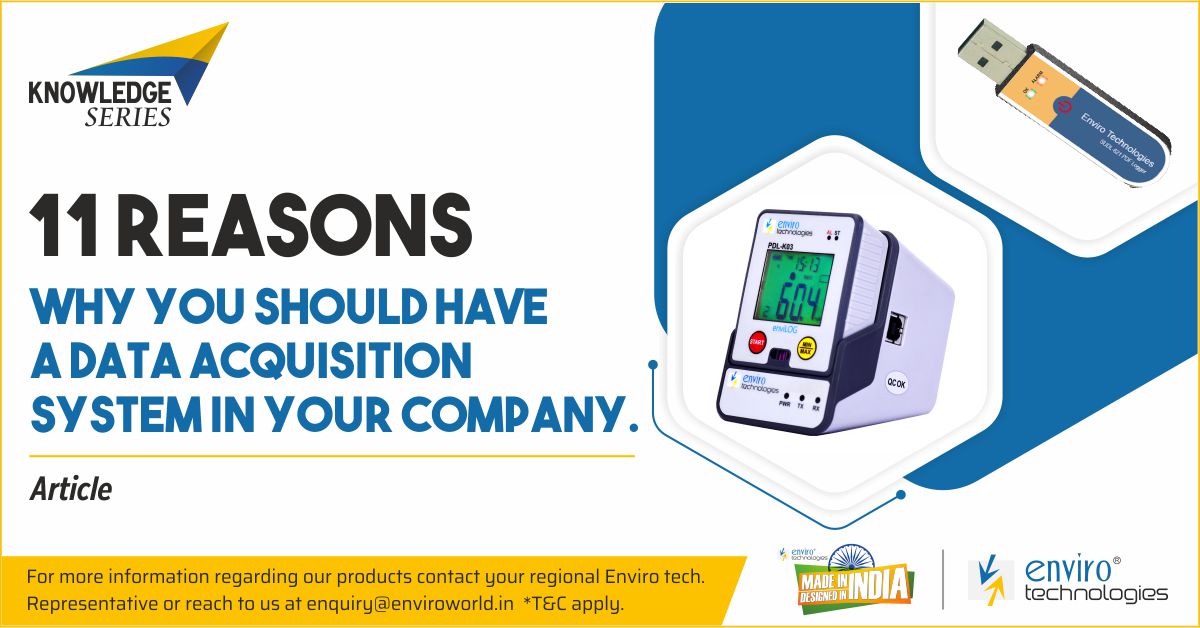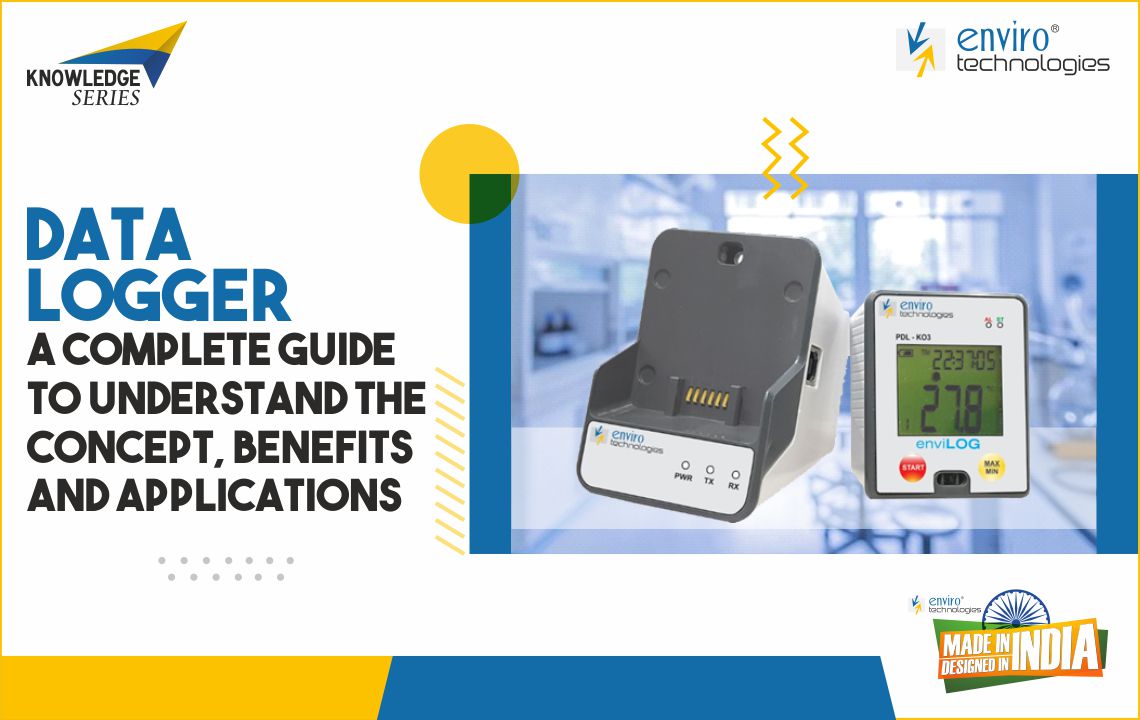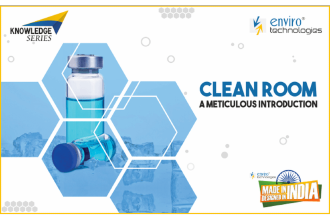- What is a cleanroom
- How are cleanrooms classified
- Classification based on ISO system
- Cleanroom classification in relation of GMP
- What is a cleanroom monitoring system
- Best Cleanroom Monitoring Systems/Solutions
What is a cleanroom?
Many industries such as pharmaceuticals, medical, life sciences, biotech, aerospace, military, energy firms, involved in producing materials or products, need contamination-free environments. Manufacturing of such products in open spaces can be hazardous as reaction with the smallest particles might lead to a useless product. This led to an increase in demand for cleanrooms due to its ability to provide contamination-free spaces for research and product development. A cleanroom is an environment where external factors including small particles which vary in sizes and complexities, can be controlled and monitored to manufacture and produce effective products, which otherwise cannot be done in open spaces.
A cleanroom is a designated space where the environment is controlled to avoid pollutants like dust, airborne microbes, aerosol particles, chemical vapours and other such particles. It is a contained space with provisions to control contamination and environmental parameters such as temperature humidity and pressure. Designing of cleanrooms requires a combination of engineering design, fabrication, finish and operational controls. Internal surfaces of the cleanroom and the equipment within them; the control and quality of air through the cleanroom; and its operations are the basic requirements of any cleanroom.
Clean rooms play an active role in the pharmaceutical industry. The pharma industries are actively involved in research, development and manufacturing of medicines and vaccines. In addition, the production of sterile medical products and packaging requires an environment to prevent contact with minute external agents such as dust particles which contain spores and bacteria, fungi, microbial organisms, chemical vapours, among others. Failure to produce these products in a sterile environment can result in product contamination leading to reduced production efficiency. Therefore, clean rooms play a significant role in the provision of a space to minimise the risk of waste, avoid consequences of contamination during critical pharmaceutical processes, control air cleanliness and maintain sterility in sensitive environments.
A cleanroom employs a few mechanisms and equipment to avoid contamination. It uses HEPA (High-Efficiency Particulate Air) filters to prevent entering of particles as small as 0.3 microns and ensures continuous air circulation to remove contaminants in the air and supply fresh air. A cleanroom should be ventilated, have bright lights and maintain static pressure to prevent infiltration by the wind. It should maintain a stable temperature for materials and equipment, and control humidity to prevent corrosion and condensation of internal surfaces and eliminate static electricity. A cleanroom should have measuring equipment to ensure that factors such as particle count, airflow, humidity, temperature, and cleanliness are at the appropriate levels.
How are cleanrooms classified?
There are different types of cleanrooms such as hardwall cleanroom, softwall cleanroom, portable cleanroom, modular cleanroom and monobloc cleanroom. These are enclosed, controlled spaces that prevent entering of contaminants such as toxins, microorganisms, chemical vapours, dust particles, fibrous materials, aerosol particles, among others that can compromise the quality of the material or the product or can harm research, manufacturing and production processes. These cleanrooms filter the particles based on the requirements of the industries such as pharmaceuticals, medical ,food and beverages , life sciences and others.
Cleanrooms are classified based on their capabilities and intended applications. The air quality it facilitates, the size and prevalence of the air particulates permitted per volume of air in the cleanroom determines its classification. These classifications show how clean the air is inside the cleanroom. ISO Class 1 meets the highest cleanliness and air purity standards, while ISO Class 9 meets the lowest requirements. However, rooms falling under ISO class 9 are found cleaner than regular rooms. Cleanrooms that fall in Class 1 are tested for the smallest air pollutant size and lowest frequency while Class 9 cleanrooms are tested for a larger air particulate size range and higher frequency.
Classification based on ISO system
| Class | Maximum particles/m3 | |||||
| ≥0.1µm | ≥0.2µm | ≥0.3µm | ≥0.5µm | ≥1µm | ≥5µm | |
| ISO 1 | 10 | 2 | ||||
| ISO 2 | 100 | 24 | 10 | 4 | ||
| ISO 3 | 1000 | 237 | 102 | 35 | 8 | |
| ISO 4 | 10,000 | 2370 | 1020 | 352 | 83 | |
| ISO 5 | 1,000,00 | 237000 | 102000 | 3520 | 8320 | 293 |
| ISO 6 | 237000 | 102000 | 35200 | 8320 | 2930 | |
| ISO 7 | 352000 | 83200 | 2930 | |||
| ISO 8 | 3520000 | 832000 | 29300 | |||
| ISO 9 | 35200000 | 8320000 | 293000 | |||
Cleanrooms found in pharma industries follow industry-specific and regional standards. EU Good Manufacturing Practices’ (class A-B-C-D), applies to pharmaceutical products and USP (795, 797 and 800) to compounding pharmacies.
Cleanroom classification in relation of GMP
| Cleanroom standard | Maximum permitted number of particles/m3 | |||
| EU GMP Grade | At rest≥0.5µm | At rest ≥5.0µm | In operation ≥0.5µm | In operation ≥5.0µm |
| A | 3,520 | 20 | 3,520 | 20 |
| B | 3,520 | 29 | 352,000 | 2,900 |
| C | 352,000 | 2,900 | 3,520,000 | 29,000 |
| D | 3,520,000 | 29,000 | Not defined | Not defined |
What is a cleanroom monitoring system?
Pharma industries are under constant pressure for manufacturing, producing and delivering safe and high-quality products. This made cleanrooms a necessity in the industry to prevent contamination by contact with external agents to ensure the safety of products and operational effectiveness. Hence it has become imperative to monitor the cleanrooms and spaces associated with it to avoid issues and take quick action when required. A cleanroom monitoring solution does real-time monitoring of temperature, humidity, airborne particles, differential pressure, energy consumption and gases.A cleanroom monitoring system is a fundamental process tool to monitor the environment. These systems help in the generation of data that show discrepancies in the environment. One can use this data to find solutions to the issues found in the cleanroom. Monitoring systems help in elimination of particles such as dust, toxins, microorganisms and others, and maintain the temperature, pressure and humidity in the cleanroom. Most cleanrooms are affected due to differential pressure in the room created due to operation of the door. The monitoring systems help in keeping the air inside the room humidified or dehumidified and heated or cooled.
Cleanrooms monitoring solutions can be broadly categorised into three types:
Environmental Monitoring: It monitors environmental parameters such as room temperature, humidity, airflow and differential pressure to keep the space in a stabilised condition.
Particle Monitoring: The system monitors the particle count allowed in the cleanroom and notifies when the count increases than the permitted level.
Automated microbial sampling: Monitors for microorganisms on an everyday basis and notifies when the count level is affected.
Monitoring systems are installed individually in a cleanroom. However, pharma industries require multiple cleanrooms for various processes which require monitoring at all levels. Hence, recent monitoring solutions also allow for distance monitoring which lets users
keep tabs on the data even though s/he is not physically present in the room. Such a system uses multiple detectors which can be configured directly in a single room.
Best Cleanroom Monitoring Systems/Solutions
Ideal monitoring systems should be GMP compliant and use risk mitigation to design and implement a real-time monitoring system that will allow users to get accurate data. It helps users create, collect and collate the data based on which they can take corrective measures and control the parameters inside the room. Therefore, one should choose a monitoring system that offers ‘record integrity’ and ‘data integrity’ as data can affect product quality. enviroDPMS product series, Enviro technologies’ best in class relative humidity(RH), temperature and differential pressure(DP) clean room monitor assists in GMP and data integrity in multiple pharma clean rooms. With the help of a monitoring software, real time monitoring can be done 24x7 from one single centralised location, even for hundreds of clean rooms in a single plant.
Also, a cleanroom monitoring system helps in the documentation of airflow and environmental parameter measurements which are necessary to monitor on an everyday basis to avoid any disruptions or damages and maintain the stability of the cleanroom. Users can monitor cleanrooms using various options such as individual sensors or centralised monitoring packages.
Data loggers effectively deal with these requirements providing uninhibited access to crucial data. Many companies opt for combined control systems to get more effective, convenient and affordable results. Cleanrooms can be easily monitored by installing solutions that monitor the airflow changes and maintain the pressure in the environments and their surrounding spaces. They also ensure stability by monitoring the temperature and humidity measurements. Enviro technologies, India’s leading environmental monitoring products manufacturer has been a prime solution provider with enviroPDL, a state-of-art accurate, tamper-proof, reliable, and portable data logger for clean room monitoring of all the important parameters. The battery-operated digital temperature/humidity sensor displays the accurate parameter values and comes in a compact design with IP52 protection making it very convenient to change positions as per the changing hotspots in a clean room.
While selecting the best monitoring solutions, the user should check if it can monitor environmental parameters, has alarms/notification system in place to avoid mishaps and captures and displays error-free data. An appropriate combination of sensor data, auto-alarming, notification and documentation are the basic things that one should consider while choosing a monitoring system. enviroDPMS provides a pop-up on the monitor of the central administrator, a text message and email to concerned officials and a hooter in the corridor. In sequence of any deviations from the set limits of parameters, these equipment specific alarms ensure necessary corrective actions.
The user can opt to mount stand-alone sensors inside the cleanrooms that display the value of various parameters which the supervisors can check manually and record. The user can also opt for a more automated process such as sensors that offer wireless connectivity. The system generates data which can be transmitted to a central computer for processing and documentation. One can also choose to accommodate these sensors with appropriate alarm systems that notify the change in pattern or swings in any of the parameters. It is advisable to opt for a solution that fulfils the functions of monitoring, alarming, notification and data-log in one centralised package. enviroSCAN, a wireless multichannel scanner measures Relative Humidity and Temperature with high accuracy and the data is streamed wirelessly over Zigbee network at set intervals. It provides various ich MIS reports and graphs in PDF formats in compliance with the US FDA 21 CFR format.
Some of the effective systems for complete cleanroom solutions include Differential Pressure Monitoring System, a software that offers real-time monitoring of differential pressure, temperature and humidity in multiple cleanrooms within pharma plants with due data integrity. The perfect solution is Web based software, which provides tamper proof files and encrypted electronic records, equipped within software that provides a spectrum of functionality including downloading, displaying, analyzing, reporting of data and 24*7 multistage alarm notification.
User can also explore Wireless Monitoring Systems, which gives them the flexibility to relocate along with real-time monitoring and provision to record, analyse and send data. Pharma companies also use Door Interlocking Systems, which helps in diminishing the particles and maintains differential pressure between rooms. Users can also opt for browser-based specialised software which allows accessibility across different network locations, generates crucial data, and sends critical alerts via SMS or email along with real-time monitoring of cleanrooms.
To conclude, clean room monitoring solutions should be selected keeping in mind the requirements and industry specific standards.





















